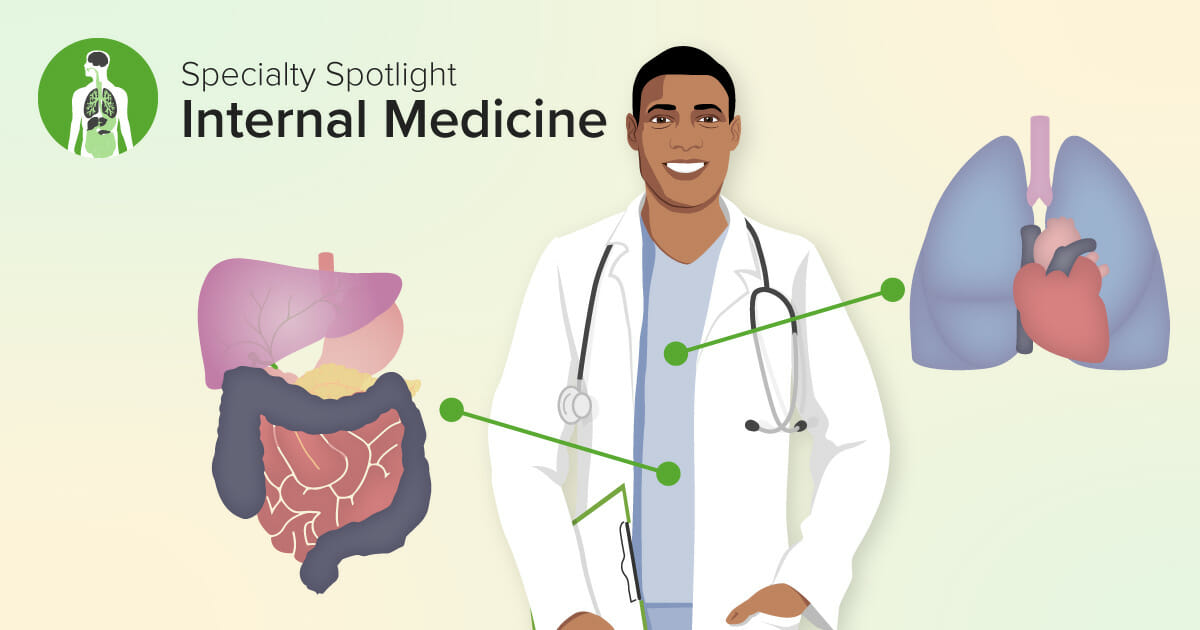Medical Residency Hours
The Accreditation Council for Graduate Medical Education limits internal medicine residency hours to 80 a week. While some days are longer and some are shorter, I would say I ended up working 10–12 hours most days. Here’s what a typical day in the life of an internal medicine resident was like for me:
Getting Started: From Coffee to Morning Sign-Out and Pre-Rounds
5:45 a.m.
I wake up and make myself a coffee, my first cup of many for the day. Since I live relatively close to the hospital, I can afford to get up a little later and still make it to work on time. If the weather is nice out, I can hopefully ride my bike to get a little cardio in before work; if not, I try to hit the hospital gym before heading to sign-out to get my blood pumping to start the day.
6:30–7:00 a.m.
I head to the overnight resident call room to pick up the overnight report on my patients. The overnight resident details anything urgent that happened and provides me with information on any new patients or pending admissions whom I’ll need to get to know and take care of today. I take detailed notes on things that happened in order to prioritize what I need to accomplish during pre-rounds.
7:00–8:00 a.m.
With a list of patients in one hand and a second cup of coffee in the other, I begin my pre-rounds of patients. Before the attending physician arrives, I need to check in on all of my patients this morning. I’ll also need to examine them and review their labs, imaging, and consultant reports to see whether I need to make any urgent changes this morning. Having a checklist of things I want to accomplish prevents me from missing any vital information I’ll wish I had on hand when the attending physician comes in. If I’m the senior resident, I’ll have to oversee my interns and answer any questions they might have during this time as well. As an intern, a skeleton outline of my notes helped organize my thinking and gave me a head start on my finishing notes for the day.
The Morning: Rounds – and a Lot of Checklists
8:00–10:30 a.m.
The attending physician arrives and starts teaching rounds. We’ll begin with any sick patients who need immediate attention, then proceed to new patients, discharged patients, and old patients. We examine and talk to each patient together, and the attending physician asks questions and teaches as we go along. Even as a senior resident, I find that the attending physician has something to teach me for almost every patient, and it’s a chance to do some teaching myself too.
My trusty checklist keeps me on track.
For each patient, I check off items as we go, calling consults and the lab, or changing medication orders on the fly to stay efficient.
Studying medicine has never been easier.
Set yourself up for success with Lecturio.
10:30–11:00 a.m.
Teaching rounds end, leading into an interdisciplinary team meeting with social workers and our care coordinators. Before patients can leave, we huddle to confirm what their needs are before they go home. Huddle ensures that all of our patients have safe discharge plans in place and have the support they need at home to get well after they leave the hospital. We also identify any patients who have ongoing needs and how to address them. Keeping a list is essential for me again – it reminds me of everything that needs to be done and focuses my attention for the afternoon.
11:00 a.m.–1:00 p.m.
From interdisciplinary team rounds, I move straight to the morning report and then to grand rounds at noon. The senior residents or interns get together to discuss a case presentation, starting from the history and physical exam and moving to the labs, imaging, and final diagnosis. There’s usually a short presentation discussing the topic by the chief medical resident and, of course, my favorite, coffee! Grand rounds is a more formal educational session, where all attending physicians, residents, and medical students participate in a presentation. Lunch is provided for the residents, so I have a rare chance to sit down and relax while listening to an expert discuss the latest research or innovations in their field.

The Afternoon: Updates, Notes, and Reports
1:00–5:00 p.m.
The afternoon consists mainly of finishing any work I wasn’t able to complete in the morning – following up on the consults I called during rounds, writing my notes for the day on each patient, and calling patients’ families to give them updates. Most days, the attending physician will pop in again during the afternoon to give a short teaching talk on a topic that pertains to one of our patients. I also see any new admissions and respond to pages about our current patients.
5:00–7:00 p.m.
With most of the work for the day done, I spend the last couple of hours finishing my new admissions and preparing a sign-out report for the night float resident, who arrives at 7:00 p.m. I summarize everything that happened today to all of my patients, any anticipated issues that might arise overnight, and any pending imaging or lab values that need follow-up. If I anticipate a patient might become unstable or is at risk of getting worse overnight, I indicate this as well. I hand over the pager to the night resident when they arrive, along with my report. If the rest of my work is done, I can leave for the day. While most days I’m able to leave the hospital by 7:00 pm, some days I end up staying later due to an unstable patient or a late admission.
Done for the Day: Ready to Do It All Over Again!
8:00–10:00 p.m.
I arrive home, exhausted after a hard day’s work and ready to do it again tomorrow! I cook a quick dinner (if I haven’t already grabbed a bite from the hospital cafeteria before leaving) and maybe unwind a little with an episode or two of my favorite TV show or a book. I might also have a little time to read up on a patient or study before going to bed. Of course, I also take some time to plan what I’ll do on my next day off!
Internal medicine residency can be grueling, and it’s important to plan out how to use your free time efficiently, since it is so limited. The sheer volume of work required in residency will encourage you to develop a system that works for you, and you’re sure to become more proficient (and efficient!) as you go along. Hopefully, this snapshot of the life of an internal medicine resident can give you a window into what this time of your life might look like and help you prepare for success!





